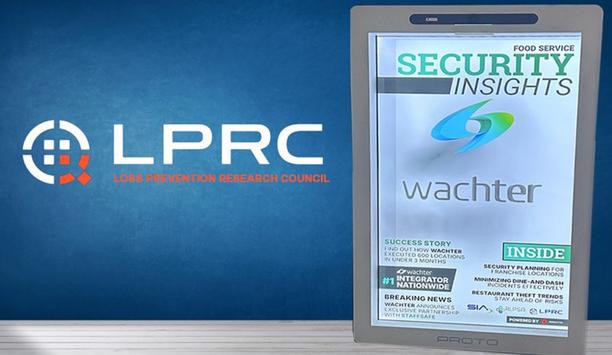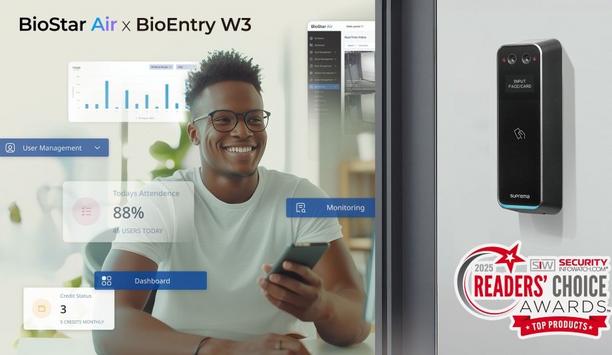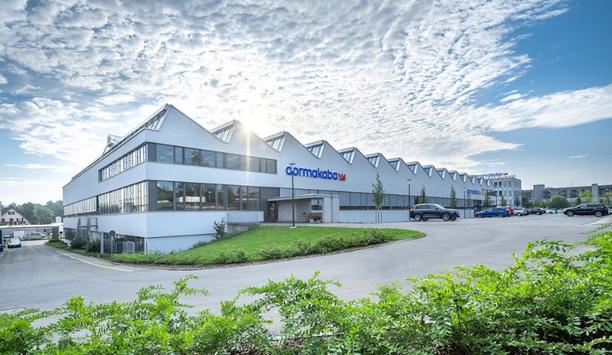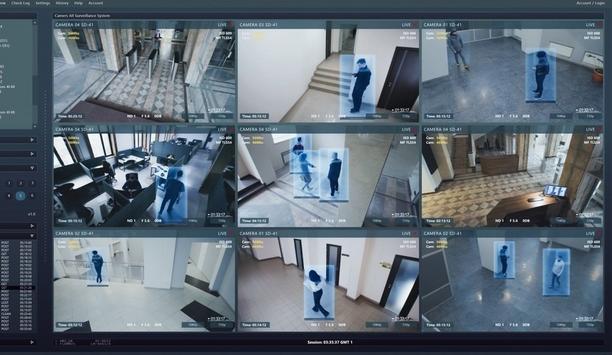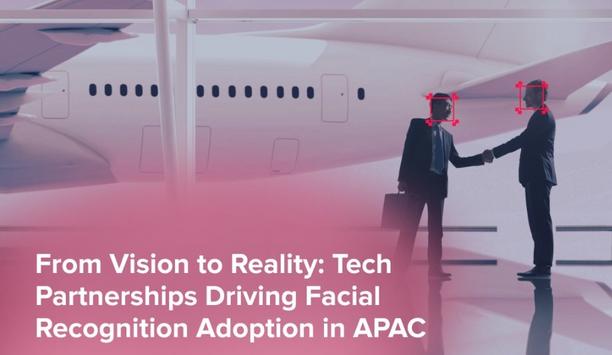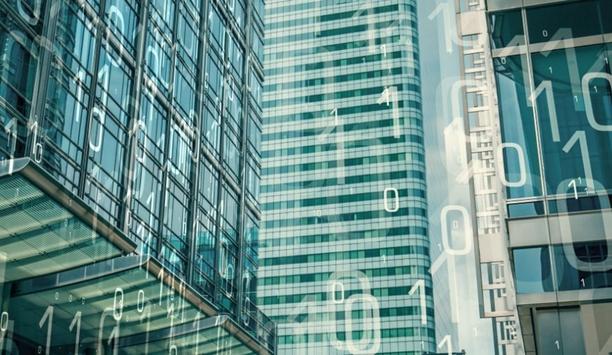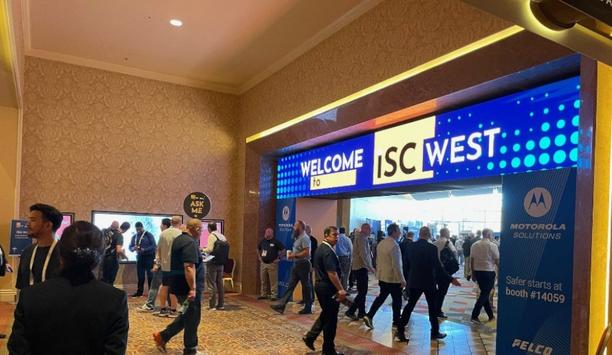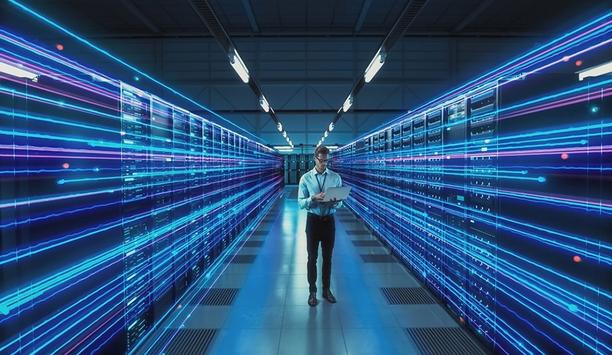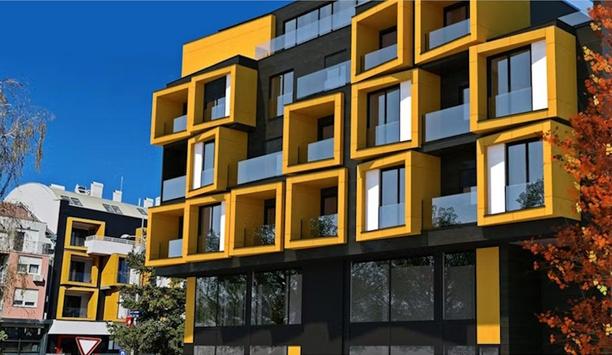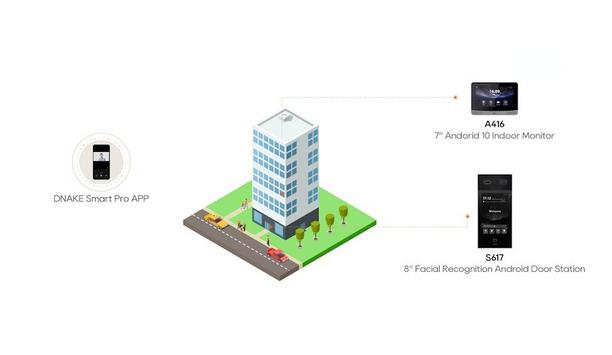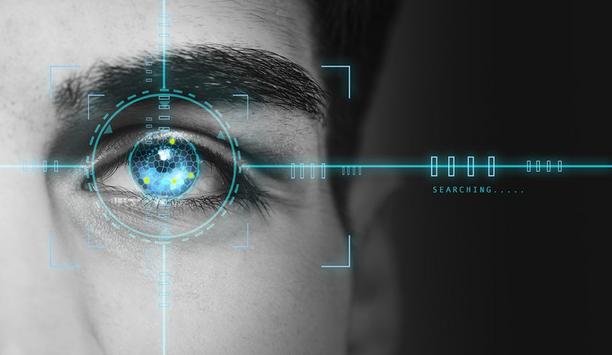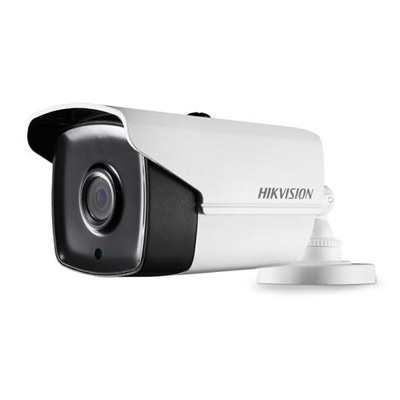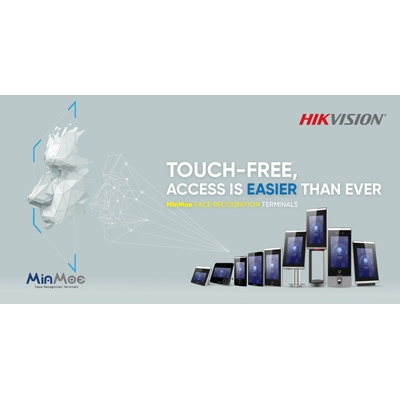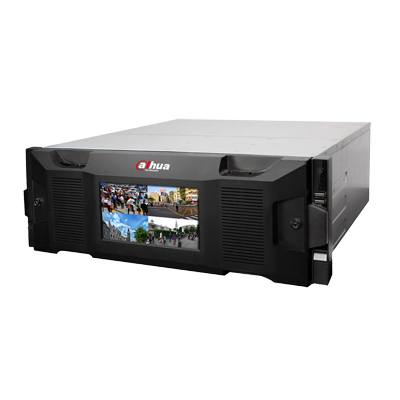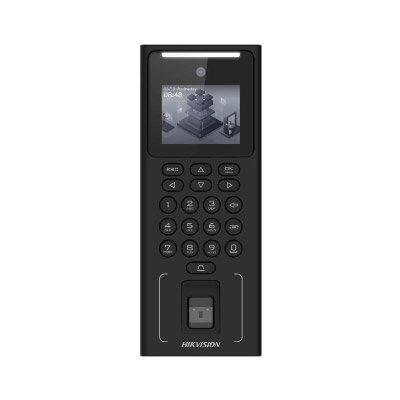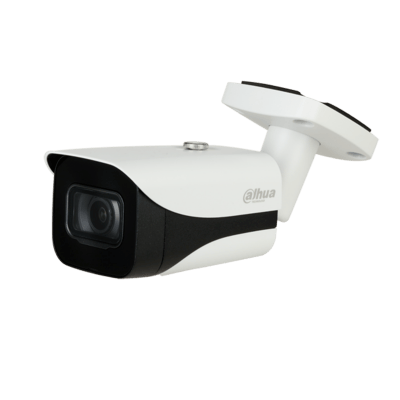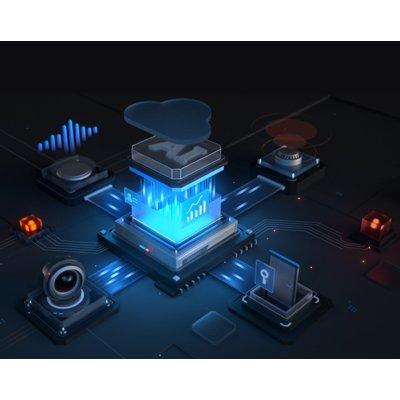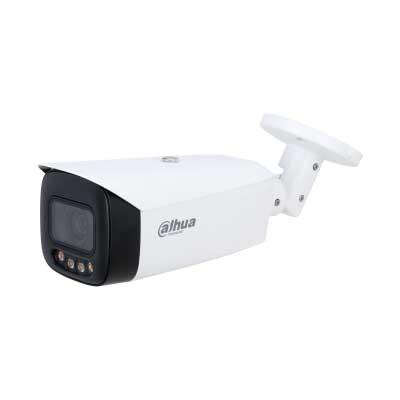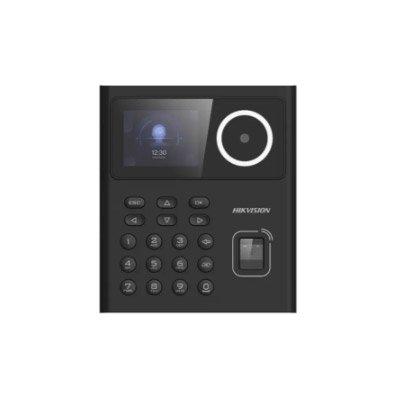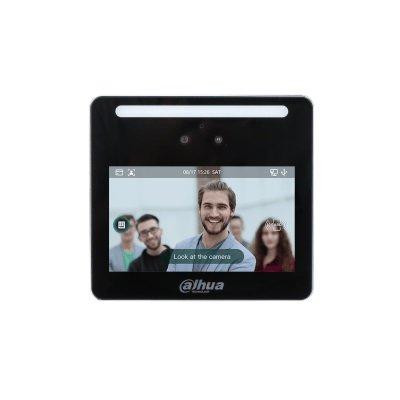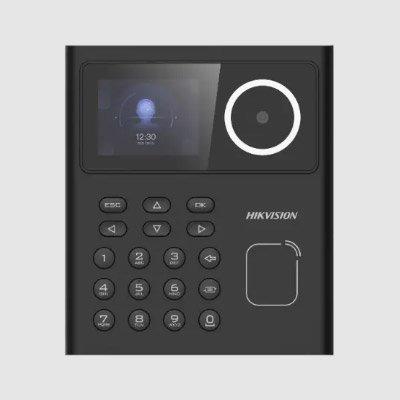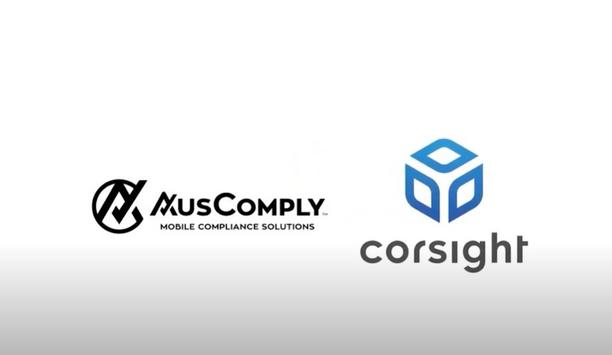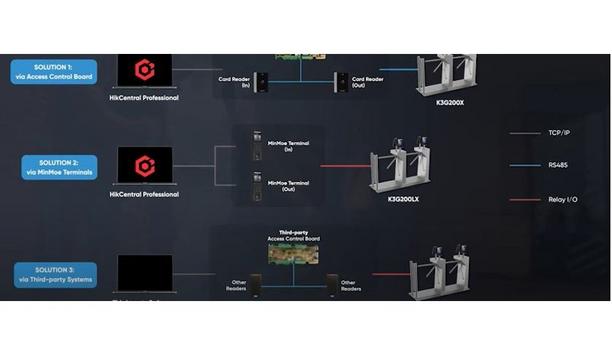Facial recognition systems
Alcatraz, the pioneer in facial biometric authentication for physical access, now announced the successful completion of its SOC 2 examination as of November 7, 2025. The independent audit was conducted by A-LIGN, the pioneering provider in cybersecurity compliance trusted by more than 4,000 global organizations. Biometric access with confidence “Trust in biometric systems depends on strong data stewardship,” said Tina D’Agostin, CEO of Alcatraz. “At Alcatraz, we work...
Wachter Inc., a pioneering technology solutions integrator and innovator, is pleased to provide the Loss Prevention Research Council (LPRC) with a state-of-the-art Proto LUMA hologram unit to enhance retail education and innovation efforts. This advanced technology will serve as an immersive platform to educate the retail community on loss prevention, history, and ongoing trends, while also offering dynamic marketing and engagement opportunities. Proto LUMA unit The Proto LUMA unit, a fully...
FARx, the world’s only fused-biometrics company, has launched the latest version of its software to help organizations stay ahead of AI-powered voice fraud. Advanced text-to-speech and voice cloning tools can now mimic human speech so convincingly that they are indistinguishable to the human listener, and legacy voice biometrics designed to authenticate human voices are unable to detect the difference. Recent data reveals a sharp rise in AI-related fraud, with 35% of UK businesses t...
Suprema, a pioneer of AI-powered security solutions, announced that BioStation 3 is expected to set a new annual global sales record by the end of this year. This represents the highest annual sales record for Suprema’s biometric devices and highlights the accelerating global demand for facial authentication solutions. Global security market Importantly, this growth reflects balanced momentum across major regions rather than a temporary spike in a single market. BioStation 3 has achieve...
Matrix, a pioneer in Security and Telecom solutions, proudly announces its prestigious recognition at the CII Design Excellence Awards 2025. This honor reinforces Matrix’s commitment to innovation-driven design and its mission to solve complex global challenges through advanced technology. The CII Design Excellence Awards celebrate outstanding contributions to design excellence across industries, recognizing organizations that blend creativity, engineering, and user-centric innovation. M...
Suprema, a pioneer of AI-powered security solutions, announced that BioEntry W3 has been named the top product in the SecurityInfoWatch.com Readers’ Choice Product Awards for the Access Control Hardware category, while BioStar Air has been selected as the top product in the Access Control Software category. Suprema’s dual win in these categories demonstrates the company’s ability to deliver industry-leading innovation and reliability across both edge AI devices and advanced s...
News
Matrix, a pioneer in Security and Telecom solutions, proudly announces its prestigious recognition at the CII Design Excellence Awards 2025. This honor reinforces Matrix’s commitment to innovation-driven design and its mission to solve complex global challenges through advanced technology. The CII Design Excellence Awards celebrate outstanding contributions to design excellence across industries, recognizing organizations that blend creativity, engineering, and user-centric innovation. Evolving demands of modern enterprises Matrix was awarded under the category ‘Design for Deep Technologies’ for its product — High-Speed Face Recognition Terminal. With <1 second authentication speed, 50,000 user capacity, and 200,000 face templates, the device demonstrates deep-tech engineering that blends advanced algorithms, hardware optimization, and high-performance data handling. This achievement highlights Matrix’s leadership in developing cutting-edge, high-performance solutions that meet the evolving demands of modern enterprises. High-performance products Sharing his thoughts on the recognition, Ganesh Jivani, CEO & Managing Director, Matrix, said: “It is indeed an honor to win this prestigious award, and I extend my gratitude to CII for this recognition. Innovation has been the DNA of Matrix right from its inception. I thank our technology and product management teams for their dedication to building innovative and world-class quality solutions.” “Matrix offers cutting-edge Physical Security solutions in more than 50 countries, including technologically advanced first-world nations. With 250+ R&D engineers and world-class processes and infrastructure, Matrix remains committed to designing high-performance products. This accreditation validates Matrix’s innovation and design capabilities and will further inspire us to build globally benchmarked solutions.”
dormakaba has acquired a minority stake in RealSense Inc. (“RealSense”), a pioneer in AI-powered computer vision. In addition to the venture investment, dormakaba will partner with the company to deliver next-generation intelligent access control solutions. RealSense was founded on July 11, 2025, as a spin-off of the pioneering technology company Intel Corporation and is based in Santa Clara, USA. With a dedicated team of around 120 specialists, RealSense offers industry-pioneering depth cameras and image processing technology. These are used in access control, industrial automation, healthcare, autonomous mobile robots, humanoids, and other applications. Intelligent access solutions for key strategic verticals Building on this venture investment to further drive innovation, dormakaba will partner with RealSense to accelerate the development of intelligent access solutions for key strategic verticals, including data centers, airports, and other critical infrastructures. In the aviation sector for example, the collaboration will reinforce dormakaba’s market dominance by further enhancing its offering with biometric and AI-technologies to meet the industry’s evolving demands. The partnership with dormakaba supports RealSense's approach of integrating innovative technologies into access solutions in a targeted manner. The use of biometric and intelligent systems enables a seamless and secure user experience. The systems can be flexibly integrated into various identity verification and authentication applications. The parties have agreed not to disclose any further details or the financial terms of the transaction.
Suprema, a global pioneer of AI-powered security solutions, has been recognized by A&S magazine as a ‘2025 Global Top 50 Security Company’, marking its fifteenth consecutive year on the prestigious list. This consistent achievement underscores the company’s sustained growth, innovation, and global influence. A&S ranks the world’s top security companies annually based on revenue and profitability. Suprema has secured its place on this list since 2011. asmag.com’s 2025 technology survey identifies AI analytics, unmanned security platforms, AI agents, cybersecurity, IoT, and hybrid-cloud architecture as key drivers of future growth. Suprema excels across these domains. Suprema’s flagship unified security platform BioStar X, Suprema’s flagship unified security platform, features AI automation for predictive security with seamless integration of access control and real-time video intelligence delivering total operational visibility. Also, BioStar Air, the world’s first biometric-native and cloud-based access control platform, is especially suited for multi-site operations due to its zero on-premises requirements and fully remote cloud management. Suprema’s edge AI technology built into facial authentication and fingerprint recognition devices such as BioStation 3 and BioStation 2a, has proven robust real-world performance in global markets. To address increasing cybersecurity demands, Suprema continually enhances its data protection protocols and ensures region-specific compliance with privacy regulations. Setting new benchmarks in security technology Suprema’s commitment goes beyond responding to trends, it consistently delivers breakthrough solutions and sets new benchmarks in security technology. Its integrated architecture, robust compliance, and focus on AI automation empower companies to navigate evolving risks with confidence. “This recognition as a Global Top 50 security company for 15 consecutive years reflects our dedication to advancing security industry worldwide,” said Hanchul Kim, CEO of Suprema Inc. “AI-powered automation, cloud-native platforms, and advanced cybersecurity are reshaping our industry. Suprema will continue to deliver intelligent, integrated, and future-ready solutions that keep organizations secure and resilient in a rapidly changing landscape.”
iDenfy, a RegTech provider of identity verification and fraud prevention solutions, announced its latest software solution that connects to the American Association of Motor Vehicle Administrators (AAMVA) data source into its Know Your Customer (KYC) verification platform. Combined with other KYC tools, such as an additional license check option, companies will now have a new workflow option that instantly verifies any U.S. citizen's driver’s license faster. This will help ensure a higher level of accuracy while verifying new users in the U.S. market during the digital onboarding process. Real-time access to the AAMVA database The new U.S. Driver’s License Check from iDenfy is built to perform KYC verification in sectors like sharing mobility, transportation, and other similar industries that specifically require confirming the user’s age and ability to operate a vehicle. That means iDenfy now offers real-time access to the AAMVA database that confirms a user's driving license validity through official DMV records. By automatically matching users' information in the official motor vehicle records, iDenfy’s easily implemented API solution confirms whether the submitted license is genuinely registered by a state authority. New AAMVA workflow When paired with a biometric check, the new AAMVA workflow is considered to be the most effective approach for U.S. driver’s license checks, as stated by Domantas Ciulde, the CEO of iDenfy: “AAMVA verification verifies that the user’s document is valid, not expired, not forged and actually belongs to them when integrated next to biometric checks, which are standard practice and an effective way to prevent deepfakes and other forms of AI fraud, which, unfortunately, is now a big security challenge.” In the U.S., a driver’s license is not only a legal requirement for operating motor vehicles but also one of the most widely used identity documents. However, due to the different individual state-based issuance, fraudulent use, and document forgery have become a common challenge for online platforms. According to the Federal Trade Commission, identity theft related to driver’s license fraud continues to rise and is affecting millions of Americans. In 2024, the number of losses to fraud accounted for $12.4 billion. iDenfy’s integration with AAMVA iDenfy’s integration with AAMVA directly addresses this issue by providing a secure onboarding system that helps businesses detect tampered or invalid licenses across multiple states instantly. Currently, 41 states in North America are active members of AAMVA, which acts as a central authority for data standardization, policy alignment, as well as secure information exchange among motor vehicle agencies. iDenfy’s integrated solution can check and verify the most important KYC data points, such as name, date of birth, license number, and expiration status. Background screening services For example, car rental or ride-sharing companies are now able to instantly confirm if a driver holds a valid and current license before granting access to vehicles. Also, insurance providers and background screening services are able to check license authenticity during application processes. The same verification logic can support employers in logistics or delivery sectors where driver license validation is mandatory for safety and legal compliance. iDenfy’s AAMVA Verification Additionally, iDenfy’s AAMVA Verification offers seamless integration via dashboard or API, which allows companies to run checks automatically as part of their onboarding flow. iDenfy compares multiple data parameters against AAMVA’s records to make sure that all license details, including number format, state code, and validity, match official databases. In this way, every U.S. business is able to onboard real users faster and to prevent fraudsters from exploiting fake or expired credentials. latest iDenfy’s AI-powered facial recognition Beyond traditional KYC processes, iDenfy’s integration with AAMVA enhances fraud detection capabilities for any high-risk and regulated industries. The onboarding system is combined with the latest iDenfy’s AI-powered facial recognition and liveness detection identity verification tools that, besides U.S. driving licenses, support over 3,000+ identity documents from more than 200 territories. Every verification is securely logged on the platform to ensure full traceability and audit readiness for internal compliance teams. Data-driven identity tools “Trust and accuracy are the foundation of secure digital onboarding. By integrating AAMVA checks, we’re enabling our partners in the U.S. to validate identities using one of the most reliable sources available directly from motor vehicle agencies,” commented Domantas Ciulde, the CEO of iDenfy. Viktor Vostrikov, CMO of iDenfy, added: “AAMVA verification is another step forward in our mission to provide data-driven identity tools that go beyond document scanning. This integration connects directly to authoritative data sources, meaning our clients don’t just verify, they confirm identity with official accuracy.”
RecFaces, a global developer of facial recognition software solutions, has announced major updates to its flagship products Id-Guard and Id-Gate, delivering new levels of accuracy, security, and usability to its partners and customers worldwide. Both solutions are now powered by an upgraded version of a facial recognition algorithm ranked among the Top 5 globally by NIST. The latest version significantly increases identification accuracy and consistency, particularly in challenging conditions such as poor lighting or partial face visibility, ensuring faster and more reliable recognition performance across real-world scenarios. The new versions also include Portuguese language support, expanding accessibility for users across Latin America and other Portuguese-speaking regions — part of RecFaces’ ongoing commitment to making advanced biometric technology truly global. Acting on customer feedback According to Farida Baichora, Product Owner at RecFaces, many of the enhancements reflect direct customer feedback: “At RecFaces, we always listen to our clients’ needs. Many of the new features in this release were implemented based on their requests, whether it’s easier configuration, greater automation, or deeper integration with existing systems. Our goal is to make facial biometrics not just powerful, but practical and intuitive for everyday use”. Id-Guard: Smart video surveillance The upgraded Id-Guard offers users a more intelligent and flexible platform for facial recognition within video surveillance systems. The product now supports full integration with Avigilon Unity Video VMS, expanding its interoperability with major global security platforms that already have certified, ready-made integrations with RecFaces and thus allowing customers to create unified, cross-platform security environments. A renewed user interface provides more personalization, from customizable dashboards and theme selection to bookmarks that help operators instantly return to key objects or events. Enhanced filtering options and faster data processing simplify forensic searches, now with the ability to sort by emotions or headdress — a valuable feature for investigations in complex environments. In addition, new group operations enable teams to manage multiple cameras, profiles, or devices simultaneously, reducing the risk of manual errors. Synchronization between two RecFaces solutions makes large-scale deployments easier to coordinate, while new options such as automatic profile creation and duplicate profile detection improve overall data accuracy and save operators valuable time. Id-Gate: Next-generation biometric access control The latest version of Id-Gate, RecFaces’ biometric access management software, introduces an even more secure and convenient way to control access to facilities. The system now supports the OSDP protocol, which provides encrypted communication between terminals and access control systems — preventing unauthorized interference and enhancing data protection. A VMS-ACS adapter enables simultaneous operation of both systems, allowing security teams to monitor and manage video and access events within one workflow. The interface has also become more flexible, allowing users to create personal reports, customize dashboards, and use bookmarks for quick access to critical records. New workflow tools such as Access Schedules help administrators manage employee permissions according to time and location, while group operations simplify configuration changes across multiple devices. Improved duplicate detection, better filtering, and updated translations make everyday system use smoother and faster, contributing to a higher overall efficiency of security operations. Innovation and recognition Reflecting its innovation and recognition within the industry, Id-Gate has been nominated for the Security Buyer Readers’ Award in the category “Biometric Solution of the Year”. Through these releases, RecFaces demonstrates its commitment to continuous improvement and customer-centric development. By combining one of the world’s most accurate recognition algorithms with features that simplify system management, RecFaces’ solutions provide measurable value to system integrators, security distributors, and organizations seeking to strengthen security, streamline processes, and accelerate digital transformation.
As self-service technology continues to transform customer experiences across industries, NRT Technology, a major provider of cutting-edge payment and guest service solutions for the gaming industry, and IDScan.net, a pioneer in identity verification technology, are proud to announce the launch of a new self-service ID verification kiosk designed for casinos and retail enterprises seeking to automate customer verification. In 30 seconds or less, the newly introduced kiosk redefines how businesses verify identity, confirm age, and meet compliance requirements. Key features of the sleek self-service machine include an embedded web cam, embedded E-Seek M500 forensic ID reader, touchscreen interface, 1080 megapixel camera and a powerful computer, all inside secure housing. Enterprise-ready identity verification solution “Consumers are increasingly choosing self-service, and businesses are seeing the financial and operational benefits,” said Jimmy Roussel, CEO of IDScan.net. “This partnership with NRT allows us to bring an enterprise-ready identity verification solution to market that enhances security, improves staff efficiency, and creates a seamless customer experience.” With the success of ResortID, a groundbreaking tool designed exclusively for resorts and casinos that introduces a new era of ID authentication, age verification, and list checking capabilities that promise to redefine security and compliance standards within the industry, IDScan.net and NRT technologies wanted to further collaborate to provide solutions that transform in-person experiences. From casinos to big-box retailers, automated rental centers, and more, the kiosk enables businesses to prevent fraud, streamline operations, and reduce payroll costs, while offering the modern convenience customers now expect. Verification process The kiosk’s intuitive interface walks users through a fast, frictionless verification process: The user enters a passcode, generated by the retailer, which initiates the verification process and ties it to a backend identity verification request. The user inserts their government-issued ID. The system authenticates the document in 8–10 seconds, using over 400 adaptive AI security checks to detect fraudulent IDs. A webcam captures a live selfie video to match facial geometry against the ID photo. Results are instantly displayed on-screen, and transmitted to a secure cloud-based backend, where authorized staff can review verification outcomes via real-time dashboards. This end-to-end authentication workflow combines document forensics, facial recognition, and cloud analytics into one self-contained system, removing the need for outdated manual ID review, while maintaining full compliance and auditability. VeriScan At its core is IDScan.net’s flagship product VeriScan, a trusted verification engine already deployed by hundreds of organizations worldwide. VeriScan supports: Full ID authentication via barcode decryption and forensic template analysis (UV/IR/white light). Facial match verification with liveness detection. Cloud-based record management and visual reporting dashboards for fraud monitoring and compliance. The kiosk can be deployed using off-the-shelf components or customized to meet enterprise specifications. Protecting businesses Attendees at NRF NYC, January 11-13, 2026, can experience the new kiosk firsthand and speak with IDScan.net representatives about how automated identity verification can protect their business and elevate customer experience.


Expert commentary
In 2021, New Orleans took bold steps to modernize its public safety strategy after experiencing a dramatic increase in criminal activity. The city invested $70M in advanced video security systems, placing smart cameras in high-risk areas like busy transit hubs and crowded public spaces to promote community safety. The cameras weren’t just traditional CCTV setups—they were smart security solutions equipped with real-time alerts that leverage AI-powered analytics, facial recognition and cloud-based technology. Reinforcing public safety Law enforcement agencies improved their response times and investigative outcomes Within months, the impact was clear: theft and burglaries of vehicles, residential and business properties reduced up to 48% total between 2022 and 2023. With 24-hour monitoring and rapid access to critical footage, law enforcement agencies improved their response times and investigative outcomes, reinforcing public safety across the city. The role of video security in community safety One of the most effective ways to keep communities safe is through video security solutions that allow real-time monitoring and provide rapid responses. Modern Video Surveillance as a Service (VSaaS) platforms allow security professionals to monitor spaces continuously, providing instant alerts for any suspicious activities. Advances in this technology are transforming the way businesses and organizations approach community safety, playing a pivotal role in creating safer environments, deterring crime, and enabling faster incident response. Video security solutions Video security solutions also contribute significantly to public safety by monitoring high-traffic areas such as public parks, busy transportation hubs, and crowded city streets. When security cameras are visible, not only do they act as a deterrent to potential criminals, but they can also significantly reduce the likelihood of theft, vandalism, and violent crime. Video security solutions also contribute greatly to public safety by monitoring high-traffic areas Similarly, large gatherings such as concerts, sporting events, and festivals present unique challenges that require a multifaceted approach to security. With thousands of attendees in a confined space, effective security measures are essential to prevent overcrowding, unauthorized access, and potential threats. In situations like these, advanced video security systems can aid in efficient crowd management, allowing event organizers to respond and react quickly in the event of an emergency. The future of smart security solutions Today, video security solutions are becoming smarter and more adaptable than ever before. For example, innovations such as solar-powered security units ensure continuous monitoring even in remote or off-grid locations, contributing to broader, more sustainable coverage. Recent developments like AI-enhanced analytics help filter out false alarms while focusing on threats, improving response times and efficiency. By embracing modern security solutions, municipalities, businesses, and event organizers can take proactive steps to protect their communities when it matters most. Public safety will always be an ongoing challenge for businesses and organizations alike for a multitude of reasons; however, the role of advanced video security systems in promoting public safety is more important than ever before.
Artificial Intelligence isn’t just a buzzword anymore. It has become part of our lives, and its uses and applications are growing every other day. Even the public sector, which usually is a late adopter of new technologies, has come onboard this new train. Law enforcement, in particular, has seen the advantages different AI technologies can offer to their work and has started to integrate them into their workflow and daily routines. But there is much more to come. Task automation: AI as a workhorse Due to the increasing importance of media files in police investigations, current police cases have an increasing amount of digital files to be analyzed. Videos from mobile phones, computer files, sound recordings, voice messages from chat applications…the list is almost endless. But, in contrast to other types of digital files, like documents or PDFs, it is not possible to search directly a certain information in a video. It has to be watched by someone. And that takes an inordinate amount of time for a human being, as there can be hundreds of videos in a case. This is one of the areas where artificial intelligence shines. Modern analytics systems are able to find almost any kind of information in media files due to the improvement of artificial vision, object recognition and face biometrics. It is simply a matter of feeding the hundreds or thousands of media files to a AI analyzer, which will work through them and find specific sounds, words, faces, cars, etc. Case of law enforcement On top of that, an analyzer does not tire after long work hours and does not make errors What is more, unlike human officers, these systems can work 24/7 which speeds up investigations considerably, as more evidence is found in less time. On top of that, an analyzer does not tire after long work hours and does not make errors. This is why police work can be helped greatly by AI Analytics, as it frees police officers to do high value work, instead of endlessly watching videos on a computer of listening to audio recordings, in search of evidence. As soon as the system finds what the officer has specified (a face, name, number plate, object, etc.) it sends an alarm to the officers’ phone, so he or she can take a look and decide what to do with that information. Despite AI being touted as a danger to many workplaces, in the case of law enforcement, it is a valuable tool to help police do more, with more accuracy, and in less time, freeing officers from the repetitive and boring work of checking mountains of evidence in search of clues. The AI Analyzer landscape The field of AI analytics is expanding constantly and new types of analysis are being discovered that may be helpful to police or intelligence. The most used analyzers today are probably Automatic License Plate Recognition (ALPR), object and face recognition. But OCR is equally useful not just for reading documents, but also signs and logos that may appear in pictures or videos, to help identify a location. And for audio (as in interception or surveillance recordings) there is speech-to-text (S2T), translation, Speaker ID, audio fingerprinting (AFP) and natural language processing (NLP) which is able to extract sentiment from what is said. All of these have their application in daily police work and can save time in investigations or make them possible in the first place. But looming on the horizon are new possibilities, which we will discuss later and that are even more powerful. So the field of AI Analytics is, by no means, a closed one. Generative AI in law enforcement LLMs will be an important part in all those tasks related to investigate large sets of documents For the past year, the term “Generative AI” has become part of our general vocabulary, although most of the time we just say ChatGTP, Copilot o similar. The large language models (LLM) use Deep Learning and different AI strategies to, amongst other things, analyze and summarize vast amounts of information, in order to generate a short report with the highlights. This can be of use for Law Enforcement in all those cases that have great amounts of documents that may contain evidence. Again, this is a case like the above, where AI helps speed up operations by doing the grunt work much quicker than any person could. The difference is in the Deep Learning part. The model can be tuned to specific needs (like financial crimes, for example) and will get better over time when dealing with specific sets of documents. Thus, LLMs will be an important part in all those tasks related to investigate large sets of documents during a case. What the future holds As with all technology, it is virtually impossible to predict what the future will hold. Because any breakthrough can upend complete sectors, as demonstrated by ChatGPT not that long ago. However, there are several promising AI technologies in the pipeline, some of which are already being tested and perfect around the world: Behaviour analysis: as facial recognition systems get better and better, they are not only able to recognize faces, but also facial expressions. This means that AI systems could be assisting during interrogations, to evaluate the truthfulness of what is being said. Combined with the analysis of small voice inflections, they can be a non-invasive “lie detector”. Robotics: already in use by many police forces around the world, robots are going to be ever so important. Particularly the autonomous kind, which is able to do missions on its own, without a human behind the controls. This, combined with swarm technology, could be an incredible help in disaster areas, where time is of the essence in locating victims. Predictive policing: thanks to pattern analysis, predictive policing, which has been to the test several times already, will be an important part of police work, to figure out where to send units or concentrate surveillance efforts. In short, AI has much more to offer, and we are going to see and incredible evolution of this technology applied to law enforcement, over the next years.
In today’s fast-evolving aviation landscape, innovation isn’t optional — it’s essential. With passenger traffic in the Asia-Pacific continuing to surge, the region is facing a pivotal moment: adapt with scalable tech, or fall behind. In January 2025 alone, APAC carriers accounted for 56.6% of global passenger traffic growth. Airports are operating at near capacity, with a record-high Passenger Load Factor (PLF) of 82.1%, leading to pronounced congestion at check-in counters, security checkpoints, and boarding gates. Increasing passenger volumes As airports strive to manage increasing passenger volumes without resorting to costly and time-consuming infrastructure expansions, technology — particularly facial recognition and biometric automation — emerges as a viable solution. However, the full realisation of these innovations requires more than just installing new system However, the full realisation of these innovations requires more than just installing new systems. It’s about building the right ecosystem of partners, processes, and policies to ensure sustainable, secure, and scalable growth. Presenting physical documents According to their estimates, over 120 APAC airports have already deployed biometric solutions at key travel touchpoints, including check-in, bag drop, security, and boarding. Thailand exemplifies this shift, with facial recognition deployed at six major airports — Suvarnabhumi, Don Mueang, Chiang Mai, Chiang Rai, Phuket, and Hat Yai — dramatically reducing passenger processing times. These systems allow travelers to verify their identities seamlessly at multiple touchpoints, from check-in and security screening to boarding gates, without presenting physical documents. This case reflects the Airports of Thailand’s (AOT) commitment to leveraging technology to improve operational efficiency and passenger experience. Digital identity programs Biometric solutions also extend beyond the airport: digital identity programs enable travelers to verify their identities before arriving at the terminal, creating seamless journeys from curb to gate. In this environment, facial recognition is not merely a futuristic innovation; it has become an operational imperative. Airports that fail to adapt risk falling behind, unable to manage burgeoning passenger volumes or meet evolving traveler expectations. True operational efficiency Despite its transformative potential, biometric technology cannot be successfully deployed in isolation. Achieving true operational efficiency through facial recognition requires strategic collaboration among technology vendors, IT integrators, airports, airlines, and regulatory authorities. Several pillars underpin a successful biometric implementation: Interoperability: Biometric systems must integrate seamlessly with a wide array of airline platforms, security protocols, and airport infrastructure. Lack of interoperability can lead to fragmented systems that frustrate staff and passengers alike. Scalability: Passenger volumes are forecasted to continue rising. Biometric solutions must be designed to scale rapidly in response to demand surges and future security challenges. Data Privacy and Security: With growing public scrutiny over personal data usage, airports must implement robust security frameworks that prioritize privacy and transparency. Encryption, consent-based use, and strict access controls are critical to gaining and retaining passenger trust. Future security challenges BKI can achieve significant throughput gains without major construction disruptions A case study illustrates these points: Malaysia’s planned revamp of Kota Kinabalu International Airport (BKI) aims to boost capacity by 33% over the next few years. Rather than expanding physical infrastructure alone, authorities are exploring facial recognition solutions to increase efficiency within existing spaces. By integrating biometric checkpoints at key touchpoints, BKI can achieve significant throughput gains without major construction disruptions. Such outcomes are only possible through well-coordinated technology partnerships, where vendors, airports, and integrators work toward a shared vision of future-ready travel. AI-powered computer vision What’s Next: Fully Biometric-Enabled Travel Looking ahead, the pressure on APAC airports is set to intensify. Airports Council International projects 9.5 billion air travelers globally by the end of 2025, a volume traditional processing methods cannot manage effectively. In response, AI-powered computer vision and facial recognition will continue to refine biometric processes, delivering higher accuracy rates and faster verification. Future systems will leverage real-time liveness detection, predictive analytics for crowd management, and seamless integrations across all travel stages. A fully biometric-enabled journey is becoming reality: Check-in with a glance at a kiosk Drop bags without producing an ID or boarding pass Clear security with automated facial recognition portals Board flights through biometric-enabled gates — without ever presenting a physical document. Experiencing significant growth Seamless integration across touchpoints creates a unified, frictionless journey In this vision of the future, identity becomes the ticket. Seamless integration across touchpoints creates a unified, frictionless journey. For APAC airports experiencing significant growth, full biometric enablement is becoming increasingly important for maintaining efficiency and staying competitive. At the same time, such a future demands robust technology ecosystems, where ongoing innovation is supported by partnerships that align regulatory, operational, and technological goals. Expanding physical infrastructure Building the Smart Airports of Tomorrow: Join the Conversation The aviation sector in APAC stands at a critical crossroads. Passenger growth, operational challenges, and heightened security requirements are converging, creating an urgent need for innovation. Facial recognition and biometric automation offer a clear path forward, enabling airports to handle growing volumes, enhance security, and deliver superior passenger experiences without necessarily expanding physical infrastructure. Facial recognition solutions Yet, the success of these innovations hinges on strategic, trusted technology partnerships. Airports must collaborate with technology vendors, IT system integrators, airlines, and regulators to ensure interoperability, scalability, and data security. At RecFaces, they believe the future of APAC airports is fully biometric-enabled. To explore how tech collaborations and advanced facial recognition solutions can transform airport operations, they invite users to join their free online panel discussion on April 30: ‘Smart Airports Start With Smart Tech: Facial Biometrics for APAC Airports.’
Security beat
An attention-grabbing exhibit at GSX 2024 in Orlando involved a robot dog that could open a door. Boston Dynamics robot dog ASSA ABLOY impressed attendees with the robotics demonstration, featuring the Boston Dynamics robot dog that could open a door using either an HID credential or a mechanical grip. This innovation represents a shift toward more autonomous security solutions and is suitable for environments where human access may be limited. ASSA ABLOY impressed attendees with the Boston Dynamics robot dog Operational efficiency Eye-catching exhibits at the GSX in Orlando, showcasing the future of security technology It was one of many eye-catching exhibits at the GSX in Orlando, showcasing the future of security technology, and offering practical solutions to the industry's challenges. For security professionals, the advancements presented opportunities to enhance operational efficiency and to maintain a proactive stance in a rapidly evolving market. Control ID face identification Alongside their robot demonstration, ASSA ABLOY also highlighted the Control ID Face Identification. Access Controller, providing advanced facial recognition access control. From identity management to AI-driven surveillance systems, GSX 2024 offered a glimpse into the tools that can streamline processes, increase security, and reduce costs. Here are some other highlights. ASSA ABLOY also highlighted the Control ID Face Identification More integration with critical infrastructure A major theme at GSX 2024 was the increasing integration of security solutions with critical infrastructure. ALCEA (formerly ASSA ABLOY Critical Infrastructure) is an example. Their globalized software solution ALWIN is designed for managing access control, visitor management, and other security factors across multiple locations. ALCEA's approach involves not only internal collaborations within ASSA ABLOY but also partnerships with external organizations. An example of innovation is the Neenah Foundry lockable manhole cover, blending safety and security. Solving identity management challenges The solution simplifies onboarding and access request changes while ensuring compliance with policies Identity management continues to be a key focus in the security sector, and AMAG Technology addresses this need with its Symmetry Connect product. The solution simplifies onboarding and access request changes while ensuring compliance with policies. For professionals overseeing identity access management, Symmetry Connect provides a streamlined, automated approach, reducing human error and increasing operational efficiency. AMAG also sees a growing demand for efficient visitor management systems, especially in the post-COVID landscape. AMAG’s products cater to the need for enhanced security without overburdening staff. AI and cloud-based surveillance solutions Axis Communications highlighted its advancements in AI and cloud-based video management systems with its AXIS Camera Station Edge and Pro products. These solutions can connect seamlessly to cloud systems, providing security professionals with easy access to surveillance data anywhere. With the increasing need for centralized management, Axis’s offerings ensure that security teams can efficiently manage surveillance with minimal infrastructure. Axis also showcased its commitment to AI-driven analytics based on superior video quality. There were also networked audio solutions for public announcements and background music, among other uses. Body-worn cameras for corporate and Healthcare uses Traditionally focused on law enforcement, Axon is now expanding its body-worn cameras and TASER technology into corporate, retail and healthcare environments. Their Axon Body Workforce camera is a practical solution for protecting frontline workers in high-risk environments. Axon also introduced drone-based solutions for real-time aerial awareness Axon also introduced drone-based solutions for real-time aerial awareness, a significant benefit for large campuses or remote locations. As more industries adopt corporate surveillance systems, Axon’s offerings provide flexible, scalable solutions that address the need for real-time, actionable intelligence. Cloud-based access for smart buildings Brivo’s native cloud systems and flexible credentials offer practical, future-proof security options Brivo showcased how cloud technology is revolutionizing access control by offering systems that integrate seamlessly with other smart building platforms. Their open API approach enables collaboration with IT teams, bridging the gap between physical security and IT management. Brivo’s new partnership with Comcast Smart Solutions illustrates how large enterprises can implement advanced solutions, including access control while maintaining flexibility. For professionals managing complex building environments, Brivo’s native cloud systems and flexible credentials offer practical, future-proof security options. AI-powered multi-sensor camera Hanwha focused on an AI-powered multi-sensor camera, equipped with an NVIDIA processor capable of running complex analytics. In addition, Hanwha’s new AI camera technology can process multiple video streams simultaneously, either stream from its sensors or outside cameras, enabling better tracking of objects in complex environments. Their eight-channel AI Box, which converts legacy cameras into AI-enabled devices, is an attractive solution for professionals seeking to upgrade existing systems without the need for complete overhauls. For security teams looking to enhance situational awareness, Hanwha’s AI-based offerings provide advanced, scalable solutions. Workflow management and hybrid cloud security Genetec continued the theme of integrated solutions with their Operations Centre module for Security Centre, which consolidates work management into a single platform. Built on lean management principles, this system simplifies workflow for security professionals, promoting real-time collaboration across mobile and web platforms. As the industry shifts from on-premises systems to hybrid cloud solutions, Genetec’s products provide seamless transitions for organizations. Their new SaaS Security Centre also allows for natural language video searches in multiple languages, making it easier for global teams to manage operations across locations. Simplifying remote surveillance The company’s focus on scalability and efficiency is demonstrated by the “Eagle Eye Complete” subscription service Eagle Eye Networks showcased their continued international expansion, highlighting a new data center opening in Saudi Arabia and new hiring initiatives in Australia and Europe. Their “Eagle Eye Anywhere” solar-powered camera system exemplifies the move towards flexible, easy-to-install solutions that can be deployed in remote locations. Integrators benefit from simplified maintenance through remote management, reducing the need for on-site support and ensuring operational continuity. The company’s focus on scalability and efficiency, as demonstrated by the “Eagle Eye Complete” subscription service, reflects the broader industry’s shift toward managed security services. Tailored solutions for commercial clients Everon continues its transition away from its former identity as ADT Commercial. Claiming the status of a competitive commercial integrator, Everon is reinventing itself by offering customized billing and monitoring solutions for a range of industries. Their cloud-based business intelligence platform, which combines video surveillance with data analysis, is aimed at enhancing operational awareness by detecting anomalies such as OSHA violations or retail point-of-sale exceptions. With AI-driven dashboards, clients can customize their security solutions to meet specific needs, reflecting a growing demand for tailored, data-driven security applications. Innovation through cloud and mobile LenelS2 is part of Honeywell, and they emphasized their investment in cloud and mobile solutions at GSX 2024. Their "Enterprise OnGuard Cloud" platform, launched in June 2024, is a testament to the growing demand for cloud-enabled access control systems. With the addition of NFC-enabled Blue Diamond credentials, LenelS2 is pushing towards smarter, more secure mobile access options. The strategic combination of Lenel’s solutions with Honeywell’s infrastructure offers users enhanced engineering capabilities and global reach. This reflects a broader market trend of integrating mobile devices into physical security protocols. Bringing AI to everyday security LPR system, combined with their Searchlight Cloud Analytics, offers a powerful tool for identifying security risks March Networks highlighted their new AI-driven smart search feature, designed to help security teams quickly detect operational anomalies in retail and financial environments. From identifying misplaced cash in quick-service restaurants (QSRs) to detecting "jackpotting" attacks on ATMs, their solution highlights the increasing importance of AI in enhancing both security and operational efficiency. Their Licence Plate Recognition (LPR) system, combined with their Searchlight Cloud Analytics, offers a powerful tool for identifying and responding to security risks in real-time, emphasising the practicality of AI in daily security operations. Driving sustainability in security Securitas showcased its commitment to sustainability, a growing concern for businesses across all industries. By providing CO2 data for clients and promoting digital tools like mobile credentials, Securitas is leading the charge in creating greener, more sustainable security solutions. Their focus on remote services and occupancy insights offers companies a way to reduce their environmental impact while enhancing security operations. The company’s alignment with science-based targets and circular economy practices signifies the increasing role sustainability will play in the security sector. Future lies in integration The GSX 2024 trade show revealed that the future of security lies in intelligent integration, AI-driven analytics, and cloud-based management systems. The innovations presented will help security professionals streamline their operations, enhance situational awareness, and future-proof their systems. As these technologies continue to evolve, professionals must stay informed about the latest advancements to maintain a competitive edge in the security marketplace. GSX was a great place to start. At the end of the day at GSX, it wasn’t just the robot dog that was opening doors …. to the future of security systems. {##Poll1727925373 - Of the important factors highlighted at GSX 2024, which do you consider most when adopting new security solutions?##}
ISC West 2024 mirrored a vibrant industry on the precipice of accelerated change. Factors such as the cloud, artificial intelligence (AI), edge computing, and biometrics are shaping the future of the security marketplace, and they were front-and-center at the industry’s biggest U.S. show in Las Vegas. Foot traffic was steady and impressive, including more than 29,000 security industry professionals viewing 750 exhibitors. A torrent of eager attendees crowded the lobby on the first day and could not wait for the doors to open. When they were admitted, the wealth of technological innovation and business opportunity did not disappoint. Focus on cloud systems Cloud systems were high-profile at ISC West. Camera manufacturer Axis, for example, introduced their Axis Cloud Connect at a press conference. Meanwhile, Genetec officially launched their Security Center SaaS platform, which aims at eliminating points of friction to enable integrators to easily embrace cloud systems from quoting and ordering to provisioning and installing. Camera manufacturer Axis, for example, introduced their Axis Cloud Connect at a press conference Cloud provider Eagle Eye Networks promoted their new “Eagle Eye 911 Camera Sharing” technology under which both non-Eagle Eye Cloud VMS customers (via Eagle Eye 911 Public Safety Camera Sharing) and Eagle Eye customers can opt to share their video feeds for use by 911 operators in case of emergency. If users opt-in, 911 operators can have access to live video as an emergency unfolds. Eagle Eye Networks provides the feature by integrating with RapidSOS call center software. Camera locations are based on geolocation coordinates, and customers can choose if they want to participate and which cameras they want to share. Biometrics in the mainstream Biometrics were well represented at ISC West, including Alcatraz AI, which introduced an outdoor version of their biometric face recognition product. The Rock X works well despite harsh lighting. Alcatraz’s products do not have to be integrated, they communicate just like a card reader using OSDP or Wiegand protocol. “At the show, customers are excited about moving to a frictionless environment and getting rid of existing credentialing,” said Tina D’Agostin, CEO and co-founder of Alcatraz. “We are making access control frictionless, secure and private. The experience can be as passive as possible – people can just walk in.” Multiple types of authentication, and the ability to detect tailgating and stream video SAFR from Real Networks also featured biometric face recognition, emphasizing feature sets, convenience, and price/performance. They offer multiple types of authentication, and the ability to detect tailgating and stream video. A new device is a small mullion mount that is “approaching the price of a card reader, factoring in the need to purchase cards,” said Brad Donaldson, Vice President and General Manager. SAFR focuses on convenience: You don’t have to take out your phone to pass through a door. Enrollment is easy by incorporating existing databases, and costs are lower than competitors, said Donaldson. The system analyses multiple points on the face, turns it into data and then encrypts it, providing a “unique signature for each person.” Credentials in Apple Wallet and Google Wallet AMAG Technology announced the compatibility of credentials with the Apple Wallet and Google Wallet. The company is also embracing a new strategic direction under President David Sullivan. They launched a new website in January, are developing dynamic resources and a partner page, and they now integrate with 120 tech partners. AMAG Technology Financial Services now enables their channel partners to offer leasing and financing options to customers. The big new booth at ISC West reflected an effort to “market different and look different,” according to the company. The big new booth at ISC West reflected an effort to “market different and look different" The new Symmetry Control Room, a command-and-control system, is a relaunch of an earlier AMAG product with enhanced features. Suitable for large enterprise customers, the software enables a big video wall to display all the various systems and incorporates all the data into a single “pane of glass.” Operators can “draw a lasso” around cameras they want to display on the video wall and can follow action across multiple camera feeds. Navigating megatrends A breakfast meeting for integrators, sponsored by Assa Abloy Opening Solutions, was built around the theme “Navigating Megatrends for Sustainable Growth." The megatrends are artificial intelligence, sustainability and cybersecurity. Related to cybersecurity, there are 350 common vulnerabilities and exposures (CVE) published per week, reflecting the continuing threat to cybersecurity. Physical security has a “data lake” of information from various physical security systems that can be an attractive target for cybersecurity breaches. Data sets can be exploited and/or poisoned. The security industry needs to apply “defense in depth” to the challenges of protecting data. “The threat landscape is always changing, and security technology is an iterative process,” said Antoinette King, i-PRO’s head of cyber convergence, one of the panelists. Natural language systems Natural language systems are a newer approach making an early appearance at ISC West Natural language systems are a newer approach making an early appearance at ISC West. Brivo, for example, has an early prototype of its “natural language search capabilities” that can answer questions such as “Who is in the office?” or “Where is Bob and what has he done?” Brivo also promoted its all-in-one door station device that combines a card reader and a camera (for facial authentication) and serves as a video intercom, thus eliminating the need for multiple devices at the door. Brivo is also emphasizing tailgate prevention, facial authentication, and people counting using AI at the edge. Also promoting natural language systems was Verkada, which unveiled a beta version of its AI Search feature that embraces national language capabilities. With AI Search, users will soon be able to use natural language to search for people or items. For example, a search could be “person climbing over a fence” or “person making phone call” or “person wearing football jersey.” Verkada wants to be thoughtful with the rollout and make sure effective guardrails are implemented to prevent abuse and bias. The release should happen in the coming months. Multi-family applications Allegion is promoting the XE360 hardware lock platform in various formats, including cylindrical lock, mortise lock, deadbolt, and exit trim. At the show, Allegion noted an enthusiasm for multi-family applications. “We have been surprised by the people who want to add electronics and to retrofit existing multi-family facilities to compete with newer facilities,” said Henry “Butch” Holland, Allegion’s Regional Director, Channel Sales East Region. Allegion works with 60 different physical access control software providers, including familiar players such as LenelS2 and Genetec Allegion also offers an “indicator” display on its locks, showing at a glance whether a door is locked or unlocked. The “indicator” might also display “occupied” or “vacant.” Allegion works with 60 different physical access control software providers, including familiar players such as LenelS2 and Genetec. Integrator M&A trends Everon looks for acquisitions in areas where they do not currently have support for national accounts A conversation with Everon at ISC West provided insights into the accelerating trend of mergers and acquisitions among the integrator community. Everon, formerly ADT Commercial, has done six acquisitions of local integrators since they changed their name last year. In targeting companies to acquire, they look for a good company with a good reputation, and they consider how the new company’s competencies complement their own. Some M&A strategy is geographic, as Everon looks for acquisitions in areas where they do not currently have support for national accounts. They also consider density, seeking to add new acquisitions in larger markets where they don’t currently have a big market share. “A lot of investment is coming into security because it is seen by investors as recession-proof,” said Michael Kennedy, VP, Mergers and Acquisitions, for Everon. Kennedy met with 95 businesses last year for possible acquisition, and the company only finalized a handful – reflecting that Everon is selective and careful that corporate cultures are aligned. “With an acquisition, the goal is to keep every customer and every employee,” said Kennedy. Voice of the customer ISC West provides an opportunity for manufacturers to listen to the “voice of the customer;” in person, no less. “We have every kind of problem come to the booth,” commented Heather Torrey, Honeywell’s General Manager, Commercial Security, Americas. “People are passionate, interested and very specific with their questions and comments,” she said. “We are driving a complete system, but we are flexible, helping our customers to meet their needs and not try to fit every foot into the same shoe. Sometimes meeting customer needs involves working with competitors," Torrey commented. “It truly comes back to listening to the customer, not just ‘this is what we have to offer,’” she adds. ISC West provides an opportunity for manufacturers to listen to the “voice of the customer;” in person, no less. Edge applications are everywhere at ISC West, and one company is promoting a new approach to expand functionality at the edge. Camera company i-PRO advocates the use of the “Docker” platform for app development, an option they offer on their cameras. Docker “containers” package deep-learning algorithms to make it easier to embed software into edge devices. Anyone can run Docker apps on i-PRO cameras that use the powerful Ambarella chip. A Docker “swarm” can combine multiple edge devices to work together and share resources. For example, the approach can increase computing power at the edge to increase the capabilities of instant analytics. It’s faster and provides better redundancies. A “distributed computing platform” ensures less latency than communicating analytics to a central server. Unification of capabilities Johnson Controls (JCI) also promotes the trend of combining multiple systems into a single pane of glass. Their “Open Blue” platform, with a security version unveiled at the show, integrates various security systems into one, combining data and monitoring device health. Basically, the system manages all resources holistically. JCI also notes a trend toward “unification of capabilities,” e.g., combining access control and video. “The scope of security is evolving from a focus on protection to a broader focus on operations,” commented Julie M. Brandt, JCI’s President, Building Solutions North America.
Security professionals are recognizing the intelligence value of leveraging publicly and commercially available information. This information can now be accessed more effectively from typically hard-to-reach regions. Also, the technological capabilities have matured in our age of artificial intelligence, machine learning, and data science. Intelligence has historically been based on classified data. However, today’s unclassified data, including open-source intelligence (OSINT), is increasingly being used to provide context and queuing for other types of intelligence. Advanced identity intelligence Babel Street is a technology company providing advanced identity intelligence and risk operations using an AI-enabled data-to-knowledge platform to unlock insights from a flood of data. The company provides advanced data analytics and intelligence for the world’s most trusted government and commercial organizations. Experts have predicted that by 2025 over 463 exabytes of data will be generated each day globally The sheer volume of data is growing exponentially. Experts have predicted that by 2025 over 463 exabytes of data will be generated each day globally. Not only are we seeing exponential growth in the volume of data, but there is also disparity in the veracity and the variety of data. This is being compounded by the ‘app economy’ in which data is created in a new format for every app added around the globe. Human language technology “The problem is that the data ‘junk’ and the ‘crown jewels’ are in the same bucket, and government and commercial entities need better and faster ways to extract intelligence from these torrents of data,” says Farid Moussa, VP, Strategy & Public Sector, Babel Street. Prior to joining Babel Street, Farid retired from the National Security Agency (NSA). He has guided video, image, speech, and text analytics (VISTA) and developed an appreciation for human language technology. An elusive source of data is the Dark Web, where every user, by design, is attempting to obfuscate their identity, and bad actors are hiding much better. “This presents a cat and mouse game – the cat must be smarter than the mouse, but the mouse is continually getting smarter,” says Moussa. Intelligence tools for data analysis SIGINT and HUMINT – while both vital – are also the most expensive forms of intelligence There are several intelligence tools for analyzing data. One of them is signals intelligence (SIGINT), which refers to electronic transmissions collected by ships, planes, ground sites, or satellites. Another is human intelligence (HUMINT), which is collected in a human-to-human fashion. Open-source intelligence (OSINT) is obtained by searching on topics or entities of interest that are publicly available on the Internet at large. Today, these various categories are often done in ‘silos of excellence.’ However, the best practice is using all forms together in a holistic fashion. SIGINT and HUMINT – while both vital – are also the most expensive forms of intelligence, while OSINT, which is growing in importance, is most cost-effective. All are vital forms of intelligence; OSINT is complementary and crucial to holistic intelligence practices. Holistic intelligence practices When it comes to physical security of people and places, OSINT has become a critical source of actionable information. Security directors leverage Publicly Available Information (PAI) to safeguard against threats to individuals, property, travel routes, and event sites. By monitoring PAI, security teams can detect and respond to potential dangers, including during and after events where thorough preparation is vital. Online information can contain warning signs of impending threats. It informs security professionals in uncovering digital traces, confirming intentions, and addressing risks across language barriers, ensuring proactive risk management for the protection of people and property. Role of Natural Language Processing (NLP) The Internet and social media were mostly English language by default, but that has changed exponentially Natural Language Processing (NLP) is a crucial capability that has evolved to recognize the richness and variety of words and names in multiple languages and scripts, and their use across cultures. Using machine learning and linguistics algorithms, the technology simultaneously considers numerous types of name variations. At one time, the Internet and social media were mostly English language by default, but that has changed exponentially. Babel Street’s world-class entity matching technology measures over 100 features to calculate the similarity of entities across multiple languages. Despite advances in data management and the cloud, there are still multiple challenges and complexities with integration of these data elements. Challenges include spelling variances/phonetics, language translation issues, criminal evasion, human error upon input, typos, etc. Accessing data from a scattered landscape While there have been advancements in cloud technologies, agencies utilizing open-source data are typically working within a highly scattered data landscape and must use a wide array of tools to get at the relevant pieces. This fragmentation makes it difficult to run analytics and apply AI and machine learning at scale in order to derive actionable insights. Unstructured and relationship data are visualised through advanced link analysis As with many disciplines, artificial intelligence (AI) is changing the game when it comes to intelligence. NLP and AI algorithms are employed to enhance datasets for greater quality, usability, and completeness. Unstructured and relationship data are visualized through advanced link analysis, geographic heat maps, influential entity carousels, topic clouds, and patterns by time and day. Geographic heat maps The advanced algorithms accurately score and prioritize critical entities within the relationship network while providing the citations from which an AI/ML-based decision was made. “With the democratization of AI, the world is becoming flat,” says Moussa. “Just like the most prosperous countries, even the poorest countries have the most advanced capabilities to do damage. Third-world economies often present a scenario where the financial gain of nefarious schemes and low-to-no regulation combine to incentivize bad actors.” The Challenges of Name Matching Identity has been an ongoing challenge for intelligence analysis due to the vast complexity of linguistics, spelling and cultural variances, human error, as well as human evasion. Technology and data science approaches are maturing, however machine translation can still struggle with meaning. The best-of-breed natural language processing capabilities run against the data while it still is in its native language. This minimizes the occurrence of analytic errors caused by inaccurate machine translations. This minimizes the occurrence of analytic errors caused by inaccurate machine translations It’s tempting to think that name matching is like doing a keyword search. The complexity of language makes it more challenging. New names are constantly created, with multiple spellings and no set of rules to encompass how names are formed. They are variable across languages, scripts, cultures, and ethnicities. Culturally specific nicknames and aliases add to the complexity. Replacing human involvement The investigation of the Boston Marathon Bombing in 2013 spotlighted an example of the significance of intelligence analysis. Even though the FBI had issued a detain alert for Tamerlan Tsarnaev back in 2011, Tsarnaev managed to travel to Russia in January 2012; and in July 2012, he returned to Boston. He was not detained on either occasion because there were too many names on the lists, and Tsarnaev’s last name had been spelled differently from the way it was on travel documents, thus enabling him to get through security. With the Internet, social media, and the dark web, there’s been an exponential increase in public communications in various languages, adding significantly to the amount of analysis required to keep societies safe. Name matching, using AI, analyses multiple contextual data points across languages to arrive at matches. Name matching, using AI, analyzes multiple contextual data points across languages to arrive at matches A common misconception is that this technology will replace human intelligence. “It’s more accurate to recognize its role as a force-multiplier, allowing humans to focus on the on the harder problems and/or vetting the results of AI,” says Moussa. “The technology can efficiently analyze massive volumes of data and distill it into actionable information in a timely manner. It augments human capabilities, enabling analysis at speed and scale beyond human capacity, without replacing human involvement.” Commercial Technology to the rescue “When it comes to threat and identity intelligence, we face a risk-confidence gap, underscored by the challenge of integrating traditional tactics with the modern digital landscape,” adds Moussa. “We cannot ‘hire’ our way out of this problem. Instead, it is imperative that we adopt technology to scale our efforts and free humans to solve the harder problems that machines cannot solve yet.” The public sector loves to build things, but there are time-to-value and return-on-investment considerations to the ‘build or buy’ decision. When commercial technology can be leveraged by government, it frees resources up to work on problems that the commercial world hasn’t yet figured out, says Moussa. “The public and private sectors need to come together – one team, one nation, working together with mutual trust and collaboration,” he says.
Case studies
Cognitec Systems Pty Ltd is working with Home Affairs Australia to deliver 250 camera devices for facial image capture, image quality check, and traveler identity verification at all major international airports in Australia. With approximately 41 million international travelers entering and leaving Australia each year, the Department uses facial biometrics to collect and electronically verify the identity of eligible international travelers. Cognitec hardware and software systems Cognitec’s capture device, FaceVACS-Entry, detects the person’s height, automatically adjusts the camera position to capture a frontal pose photo, and uses automated face recognition to verify person identity. Cognitec is also providing integration software, mounting hardware, device installation services, as well as ongoing support and maintenance services for all Cognitec hardware and software systems. Relationship with the Department of Home Affairs “Cognitec is proud to continue a successful relationship with the Department of Home Affairs, and to deliver our technology for quick collection of biometric photos and for accurate traveler verification at the Australian border primary lines,” says Terry Hartmann, Cognitec’s Vice President Asia Pacific, adding “This project contributes to the security and ongoing digitization of the Australian border, ensuring trusted traveler identities.” FaceVACS-Entry is used by governments worldwide for applications that require the acquisition of standards-compliant photos, and the verification of a live image against reference images, such as access control, border control, and entry/exit programs.
Located in the tranquil surroundings of Addlestone, Surrey, Rodwell House serves as part of the renowned Graham Care Group. This 79-bed nursing facility specializes in providing exceptional care for residents with dementia and physical frailties, continually seeking innovative ways to enhance service delivery. Meeting the evolving needs of modern care As a forward-thinking facility, Rodwell House sought to enhance the entry experience for both staff and visitors. The management team understood that the existing manual entry system, which required staff to remember and input codes throughout their shifts, could be improved to allow more time for resident care. For visiting relatives, many of whom are elderly themselves, the facility wanted to create an entry experience that was more welcoming and accessible. "We wanted to make visiting easier and more comfortable for families," says care home manager, Janet Bromley. Quality assurance initiatives "With the nature of the care that we provide, we need comprehensive oversight of people as they come in go out," explains Bromley. “Our commitment to provide excellent care means we recognize the value of having detailed access records throughout the building." "These support quality assurance initiatives and provide us with the insights we need to optimize the quality of our service. It was important, for example," says Bromley, “that we could get a clear record of which staff have been in different areas at particular times.” Facial recognition access control meets compassionate care Working closely with Graham Care's IT team, Rodwell House selected Hikvision's Face Recognition Terminals (DS-K1T342MWX-E1(O-STD)). 160 terminals have been strategically positioned at entry points, communal areas, and ward locations, with dedicated units for both entry and exit monitoring. Each terminal features a 4.3-inch LCD touch screen and built-in card reading functionality, supporting multiple access methods including facial recognition, card access, and traditional code entry. A particularly valuable feature for healthcare settings is the system's face-with-mask recognition capability, helping to maintain security protocols without compromising hygiene requirements. HikCentral Professional platform The terminals integrate seamlessly with the HikCentral Professional platform, creating a centralized management system that generates detailed access logs showing who entered which areas and when. This provides administrators with comprehensive visibility into facility access patterns while enabling quick retrieval of specific entry records for quality assurance or incident review purposes. To ensure full compliance with privacy regulations, Rodwell House obtained proper consent from all staff, residents, and families before implementing the system. The installation follows strict GDPR protocols, with alternative keypad access remaining available for those who prefer traditional entry methods. Delivering measurable improvements in service quality The implementation has generated significant improvements across multiple areas of facility operation. Staff members have embraced the technology enthusiastically, with entry processes becoming notably more efficient and secure. "From the staff perspective, it's brilliant," says Bromley. "I find it so easy to just go in—and other staff do, too. When it comes to entry, it's been a real and very popular success." The enhanced security capabilities of the new system now provides crucial support for safeguarding procedures. The system maintains comprehensive access records that can be quickly retrieved when investigating incidents or addressing concerns. "If we need to review any safeguarding situations, we can now easily access the entry records," explains Bromley, highlighting how detailed logging supports resident protection protocols. Relatives in the facial recognition system The new system has also revolutionized service oversight through better visibility into care delivery patterns. By recording access patterns to resident areas, management can confirm that care schedules are being followed appropriately. This enables them to verify that residents receive regular attention and ensures service consistency across all areas of the facility. Accessibility improvements are particularly significant for visiting families. The planned expansion to include relatives in the facial recognition system will eliminate the challenges associated with visitors remembering codes and operating keypads. "Facial recognition will make life a lot easier," says Bromley, emphasizing the technology's role in creating a more welcoming environment for elderly family members. A blueprint for future-ready healthcare facilities Rodwell House's successful deployment demonstrates how AIoT (AI-powered Internet of Things) technologies can enhance both security and care quality while maintaining the dignity and comfort that residents deserve. The scalable solution will be adopted across four other Graham Care facilities, with plans for over 800 additional terminals, establishing a new benchmark for smart, secure elderly care environments throughout the organization.
Elegance, design and entertainment – that’s what the new Grand Sapphire Resort & Casino in Iskele, in the east of the Turkish Republic of Northern Cyprus (TRNC), stands for. This exclusive hotel complex, located directly on the beach of the Karpaz Peninsula, offers guests top-level service, stunning architecture and a very special highlight: a casino with 42 live game tables and over 300 slot machines across a 2,700 m² gaming area. To ensure that guests not only have an impressive but also a safe experience, Grand Sapphire relies on a customized video surveillance solution from Dallmeier. The “Made in Germany” video technology ensures around-the-clock security and efficient processes – not only through high product quality, but also through the highest standards for data protection and data security. Data protection requirements One of the main requirements was the complete monitoring of gaming areas When the casino was opened, the security team at the Grand Sapphire Resort faced the task of implementing a modern casino security solution that would ensure both guest safety and smooth operations. “Our goal was to create a top-tier casino environment – and that includes a security concept that combines quality, data protection and efficiency,” explains Bayram Tegay, General Manager at Grand Sapphire. One of the main requirements was the complete monitoring of gaming areas, especially the live game tables, without interfering with day-to-day operations. At the same time, an exceptionally high level of data protection had to be maintained. Strict compliance regulations “In Northern Cyprus, casinos face especially strict compliance regulations,” says Yücel Çalişkan, Surveillance Manager at the resort. “Our department operates in full isolation from the rest of the organization. Protecting sensitive data is not optional for us – it is the very foundation of our work.” Integrated surveillance concept The team opted for a comprehensive video surveillance system from Dallmeier The team opted for a comprehensive video surveillance system from Dallmeier, planned and implemented by Dallmeier Türkiye. The customized security concept was visualized and preconfigured using the 3D camera planning tool PlanD. “PlanD offered the customer 100% planning reliability,” says Orhan Yörükoğlu, Director of Dallmeier Türkiye A.Ş. “Project stakeholders could see in advance exactly which camera would cover which area and what the overall project scope would be. That was enormously helpful for decision-making.” Precision from eight meters above All cameras were installed at a height of approximately eight meters on the ceiling All cameras were installed at a height of approximately eight meters on the ceiling – a technical challenge solved through the use of high-resolution cameras with suitable optics. For seamless surveillance of the 42 live game tables, slot areas and entrances, the installation combines Dallmeier PTZ and dome cameras. To provide a full overview of the gaming floor, a Panomera S8 multifocal sensor system is used. Thanks to its unique optical design, Panomera delivers a complete overview of the casino floor while still allowing detailed zoom-in views where needed. Central control room In the central control room, four operators work per shift on three 27-inch monitors each, while 18 large-format monitors provide overall visual control. Recording is handled redundantly via IPS 10000 network video recorders. The entire system is managed using the Hemisphere VMS platform operated on four VMC Touch workstations. For non-public areas, ONVIF-compatible third-party cameras are used, and their data is also fully integrated into the Dallmeier system thanks to Hemisphere’s open system architecture. Facial recognition Another key feature is the integration of a Corsight facial recognition system, operated on dome cameras Another key feature is the integration of a Corsight facial recognition system, operated on dome cameras. The system automatically identifies blacklisted individuals when they approach the casino entrance and notifies both front desk and security personnel in real time. “This feature not only helps us enforce bans, but also strengthens our guests’ sense of security,” says Çalişkan. “We receive alerts within seconds if a blacklisted individual tries to enter the casino.” Although the casino is open from 12:00 noon to 6:00 am, the surveillance system operates 24/7. This ensures that potential threats such as break-ins or tampering outside of business hours are reliably detected. In day-to-day operations, the system significantly speeds up incident resolution – for example, in the case of misunderstandings between dealers and guests. Closed network architecture The entire system operates within a completely closed network – with no physical or wireless interfaces to other systems, no cloud connectivity, and no mobile access. This architecture ensures full data security and regulatory compliance. Internally, strict policies are in place: surveillance staff are not permitted to have contact with employees from other departments. This underscores the critical role of data protection in the casino environment of Northern Cyprus. The current system architecture is designed for seamless future expansion. AI-based functions and video content analytics (VCA) can be integrated at any time if required. Security meets efficiency With the Dallmeier solution, Grand Sapphire benefits from a state-of-the-art surveillance system that not only meets the highest security standards but also supports operational efficiency. Casino Manager Bayram Tegay concludes: “The image quality, system responsiveness and support have really convinced us. For us, it was absolutely the right decision. Thanks to Dallmeier, we can make well-founded decisions at any time – quickly, reliably and based on high-quality data.”
Slavija Residence Luxury, a premium residential complex in Novi Sad, Serbia, has implemented its security infrastructure with DNAKE’s cutting-edge smart intercom systems. The installation covers 16 high-end apartments, combining sleek design with advanced technology to enhance resident safety and access control. The solution In the connected world, modern residents prioritize both security and convenience—demanding access control that’s not just robust but also effortlessly integrated into their lifestyles. DNAKE’s smart intercom systems deliver exactly that, blending advanced protection with intuitive technology for a smarter living experience. Unmatched Security: Facial recognition, instant video verification, and encrypted access management ensure residents’ safety is never compromised. Effortless Connectivity: From HD video calls with visitors to remote door release via smartphone, DNAKE keeps residents connected and in command, anytime, anywhere. Designed for Simplicity: With an Android-powered interface, sleek indoor monitors, and the Smart Pro App, every interaction is streamlined for users of all tech levels. Installed products S617 8” Facial Recognition Android Door Station H618 10” Android 10 Indoor Monitor Smart Pro APP
Centro Ilarco is a state-of-the-art commercial office building in the heart of Bogotá, Colombia. Designed to accommodate three corporate towers with a total of 90 offices, this landmark structure focuses on providing innovative, secure, and seamless access experiences for its tenants. The solution As a multi-building office complex, Centro Ilarco required a robust access control system to ensure security, manage tenant entry, and streamline visitor access at every entry point. To meet these needs, the DNAKE S617 8” Facial Recognition Door Station was installed across the building. Since its implementation, Centro Ilarco has experienced a significant boost in both security and operational efficiency. Tenants now enjoy hassle-free, touchless access to their offices, while building management benefits from real-time monitoring, detailed access logs, and centralized control of all entry points. DNAKE smart intercom solution has not only enhanced security but also improved the overall tenant experience. Installed products S617 8” Facial Recognition Android Door Station Smart Pro APP
Projekat P 33 is a premier residential development in the heart of Belgrade, Serbia, that integrates cutting-edge technology for enhanced security, seamless communication, and modern living. By incorporating DNAKE state-of-the-art smart intercom solutions, the project exemplifies how technology can seamlessly merge with luxury living spaces. DNAKE’s smart intercom system DNAKE’s smart intercom system was the ideal choice for Projekat P 33. In this connected world, residents not only expect high levels of security but also demand intuitive, easy-to-use access control systems that integrate effortlessly into their daily lives. DNAKE's advanced smart intercom solutions meet these needs, combining cutting-edge security features with seamless communication for a superior living experience. Enhanced security With facial recognition, real-time communication, and secure access management, residents enjoy peace of mind knowing their building is protected by cutting-edge technology. Seamless communication The ability to interact with visitors through video calls, as well as remotely manage access, ensures that residents are always in control. User-friendly experience The combination of the Android-based door station, indoor monitors, and Smart Pro App ensures a smooth and intuitive experience for users at all levels. Installed products S617 8” Facial Recognition Android Door Station Smart Pro APP A416 7” Android 10 Indoor Monitor


Round table discussion
In the past, security installers and integrators were used almost exclusively to install hardware. However, the role is changing and expanding along with the technologies used in the physical security industry. Nowadays, an installer or systems integrator is much more likely to use a strategic, IT-centric, and data-driven approach. To gain additional insights, we asked our Expert Panel Roundtable: How is the role of the security installer/integrator changing?
Technology offers a range of tools to bolster security at public events, including before, during, and after. This year, the 2024 Summer Olympics in Paris will draw the attention of the world, requiring the best protection available for the venues, the athletes, and the attendees. Other happenings such as the FIFA World Cup, the Super Bowl, the Tour de France, and the U.S. NBA Finals are momentous events that challenge security and law enforcement personnel to keep them safe. We asked this week’s Expert Panel Roundtable: How is technology contributing to security in the arena of public events?
Technological leaps in the last several decades have revolutionised biometrics. The technologies are constantly evolving, spanning facial recognition to iris scanning to fingerprints, to provide new levels of security and convenience. Biometrics are everywhere, from smartphones to border control, constantly evolving to meet the needs of our increasingly digital world. They are also more accurate and easier to use than ever. We asked this week's Expert Panel Roundtable: What’s new with biometrics?
Products


White papers
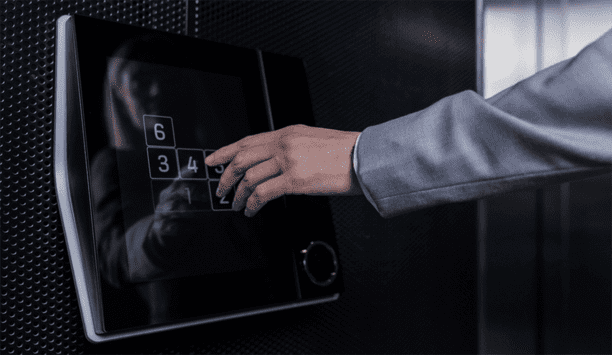
Open Credential Standards And The Impact On Physical Access Control
Download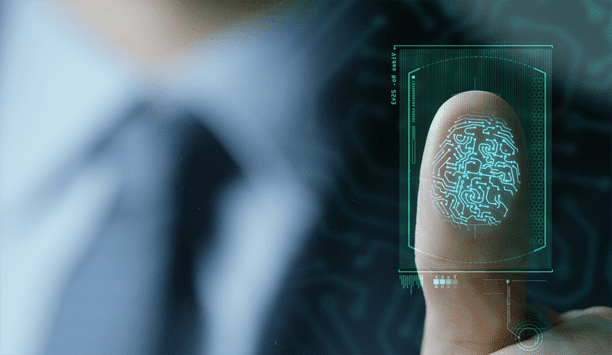
System Design Considerations To Optimize Physical Access Control
Download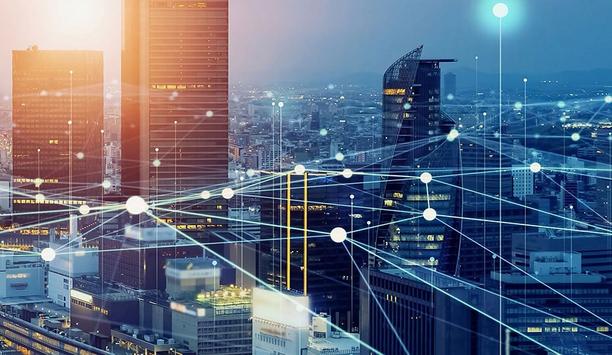
How Biometrics Are Reshaping Security In A Connected World
Download
Integrating IT & Physical Security Teams
Download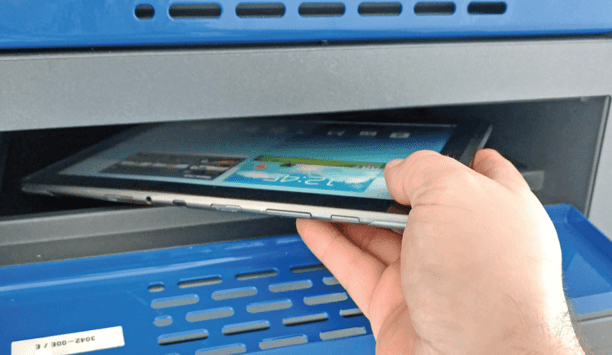
Best Practices For Asset Management
Download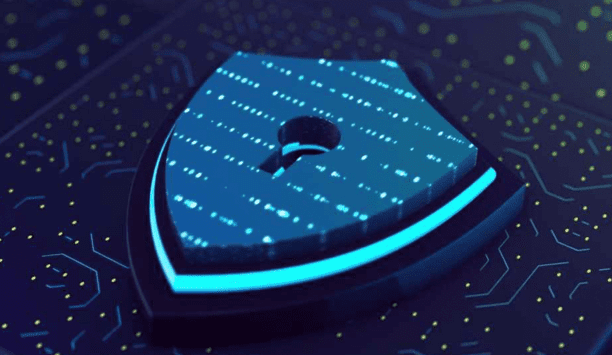
AI In Security Solution
Download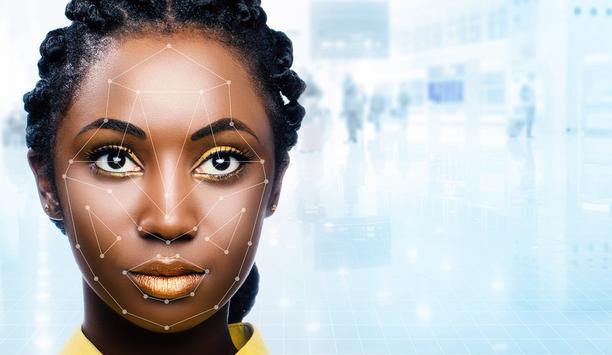
The Rise of Ethical Facial Recognition
Download
Protecting Critical Infrastructure Through Facial Recognition
Download
Six Things To Look For When Adding AI Cameras To Your Operation
Download
The Security Behind Financial Security
Download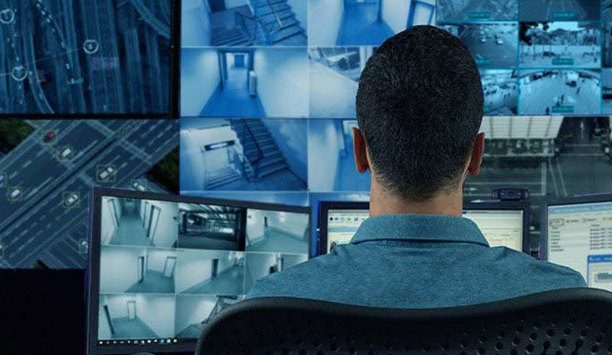
How To Overcome The Storage Challenges Of Adopting Surveillance AI
Download


